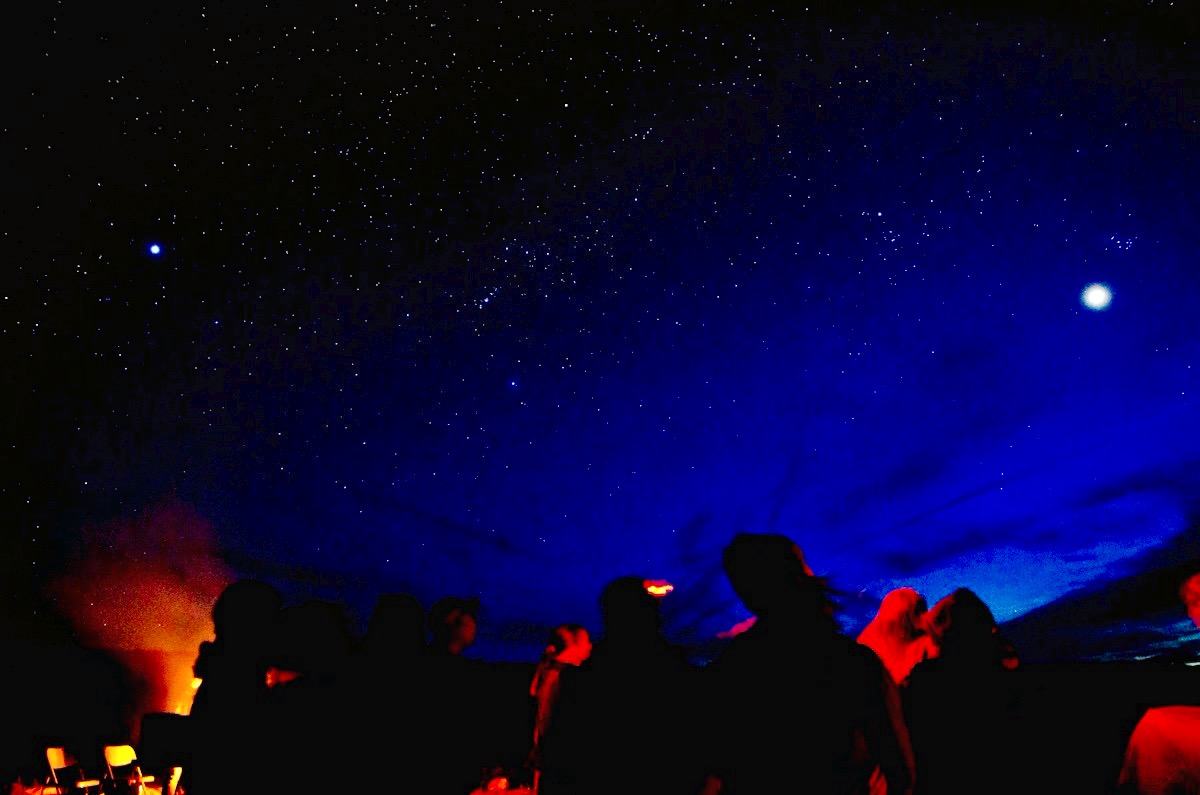For many people, particularly those who live in urban areas, a visit to Dead Horse Point State Park is their first time seeing the Milky Way.
That’s because in many locations light pollution obscures the stars in the night sky. Not at Dead Horse Point, however – a park that received Dark Sky Park status from the International Dark-Sky Association International in 2016.
People are invited to experience the dark sky when the park hosts a number of night sky programs in August.
On August 18, the first event will focus on Jupiter and Saturn. Peering through telescopes, visitors should be able to see the moons of Jupiter and the rings of Saturn.
The program will present “interesting facts about the planets, why they’re unique,” park ranger Spencer Stokes said.
Those planets will be visible due to their proximity to the Earth, even though the moon will be at least half-full at that time. As the moon wanes, additional night sky programs will expose nebulas, star clusters and galaxies that are too bright to see when the moon is full.
“Dark Side of the Park” sky programs will be offered August 20, 24, 25, 27, 31, with Ranger Stokes leading the programs. Two telescopes will be available for visitors to view deep space objects outside of our solar system, he said.
“I’ll start off with a presentation on the stars, constellations, and a constellation tour,” Stokes said.
“Most people don’t think of the night sky as a natural resource. They are a natural resource that we can easily protect and improve as a society,” park manager Dillon Hoyt said. “Our goal at the park is to allow the public to see how amazing night skies are and to encourage people to take steps in their own communities to protect and preserve them.”
Typically, 50 to 100 people come to the park’s regularly scheduled night sky programs. While other nearby parks host night sky programs once a month, Dead Horse Point strives to have several each month – six to eight during the summer, and four monthly throughout the fall and winter seasons.
Arches and Canyonlands national parts are also certified Dark Sky parks. A Dark Sky certification indicates “a land possessing an exceptional or distinguished quality of starry nights and a nocturnal environment that is specifically protected for its scientific, natural, educational, cultural heritage, and/or public enjoyment.”
The certification aims to “encourage communities, parks and protected areas around the world to preserve and protect dark sites through responsible lighting policies and public education,” according to the darksky.org web site.
While other parks focus their interpretive programs more on geology, Dead Horse Point attracts large crowds with its night sky programs, Stokes said.
“We decided to move toward astronomy – it’s something different,” he said. “It’s really a treat for people to see what a dark sky used to look like (everywhere) before electricity.”
The park programs are free to attend, although entrance fees of $20 per vehicle apply. No advanced registration is required. Visitors are welcome to bring lawn chairs.
“It’s really a treat for people to see what a dark sky used to look like before electricity.”
Spencer Stokes, Dead Horse Point State Park Ranger
Night Sky Programs at Dead Horse Point State Park
August 18, 20, 24, 25, 27, 31
Cost: Program is free, though park entrance fee applies




